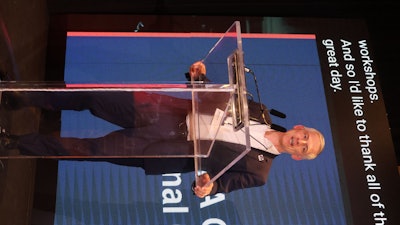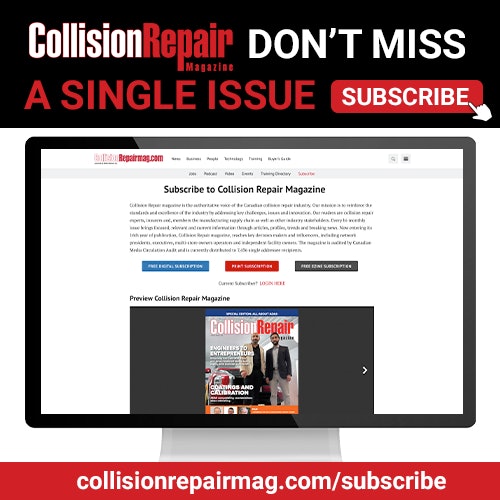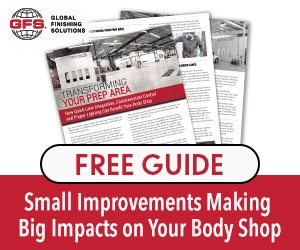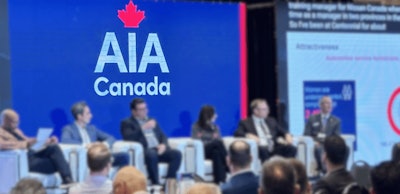
By Allison Rogers
This was my third year attending the Automotive Industries Association of Canada (AIA Canada)’s annual National Conference, and there was an overwhelming sense of change in the air.
There was, of course, the literal change of Chair for the AIA Canada Board of Directors, which welcomed a familiar face for our readers, Ryan Bruno, President and CEO of CSN Collision Centres, as its new Chair. But, with every conversation and presentation, it was clear that the industry is ready and willing to embark on the next adventure—one that is sure to be full of change.
Conversations from Thursday were largely centred around three massive issues facing the industry—one, the skills shortage; two, embracing various forms of emerging technology, including artificial intelligence (AI); and three, navigating the current market collaboratively and profitably.
Below are my top three takeaways from the event.
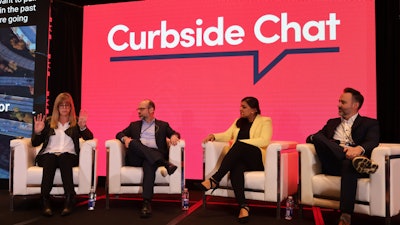
The current situation is a balancing act for us all
You’d be living under about 27 rocks if you’re yet to understand the impact technology is about to play on the industry, namely the continued surge of advanced driver assistance systems (ADAS), electric vehicles, new body materials and artificial intelligence. Training is necessary to navigate this future. Training costs money.
As pointed out by Sabrina Thring, group president for Driven Brands’ collision brands, this is just another step in the delicate balancing act collision centres are standing on.
“We have a disconnect between the OEs, the insurers, the shops…at Driven, we spend a lot of time in focus groups, understanding profitability and how we can make money in this market.
“Pleasing the OE, pleasing the insurer, pleasing your staff, pleasing the customer…all with the bottom lines we’re seeing. That’s a big topic of conversation right now.”
Skills shortage—more needs to be done, but what?
Sylvian Seguin, president of Fix Network Canada, summarized it perfectly when he said more work needs to be done to promote the career path in the collision repair industry.
He emphasized that, in today’s day and age, it’s easy for budding technicians or painters to get lost in the daily humdrum of things and think that’s what the rest of their lives look like.
Training and awareness are key steps in informing young industry members of their potential opportunities. Seguin emphasized his point by explaining that, when staff are training in more private settings like Fix Network’s various training centres across Canada, he notices an added level of engagement.
“When you put them in an environment where they don’t have to push a certain number of cars through, where they’re not worried about deadlines—they become open to learning the methods, and ultimately seeing all of the opportunities they can reach.”
He added that some parents aren’t necessarily supportive if their kid wants to pursue an autobody career.
“The visual that some parents have—that their kid is sitting in a dusty bodyshop everyday—it’s not like that anymore. We need to get parents and youth to see the trades as a solution.
“I look at the trade today and I see a better trade than when I entered 35 years ago,” concluded Seguin.
Artificial intelligence isn’t going anywhere
Paul McCarthy, president and CEO of MEMA Aftermarket Suppliers, summed up AI’s current position in the auto industry by saying that, if you’re not using AI in sales and marketing, “you’re working too hard.”
“We’re a technology industry, and we must be immersed in the newest technologies going forward. Our customers expect it, the market expects it, and we have to oblige,” he added.
Doug Stephens, founder and CEO of Retail Prophet, emphasized the good and bad effects that artificial intelligence has on retail environments.
Artificial intelligence is used for good in supermarkets and other retail shops to thwart shoplifters, where cameras are trained to recognize suspicious behaviours among shoppers and alert supervisory personnel. In collision, we see AI used for operational success and in many claims systems and in the estimation process today, and the technology is only burgeoning on its full potential.
On the other hand, AI can also be used to mimic voices, pictures and even live videos of people.
“What if someone uses AI to impersonate your customer, and their AI tells you that they—the customer—are sending someone else to pick up your vehicle? You’ll have no idea who the person picking up really is. What do you do then?”
Conversations ahead
The day ended with an unspoken agreement between the audience and industry—that conversations need to occur.
We are facing a sea of change on many fronts—in technology with ADAS, electric vehicles and AI; in solutions to the skills shortage and beyond—and all verticals need to embark on further discussions before we reach full potential for the next era.
